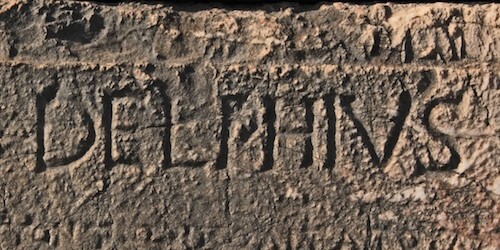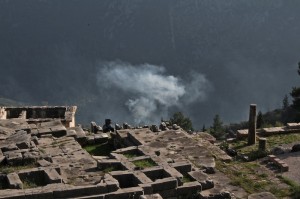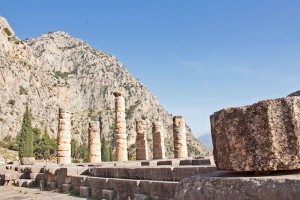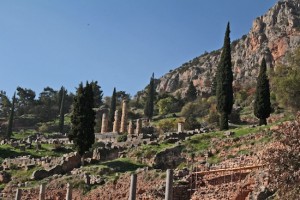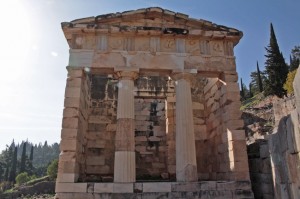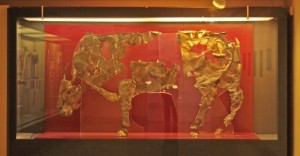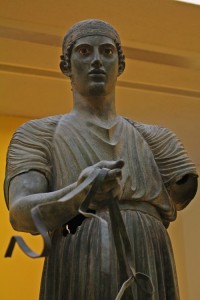We try not to offend any culture, but worshipping a woman who’s stoned all day, mumbles incoherently and then takes all your money? Come on Delphi, what were you thinking?
Delphi is most famous for its Oracle – priestesses who apparently spent their days inhaling vapours from the earth, after which they would make their pronouncements. Kings and emperors travelled great distances and paid large amounts of money to have their questions answered, making the priestesses among the most powerful women in the ancient world.
The priestesses, or sibyl, were also known as the Pythia and were considered the mouthpiece of the god Apollo, whose temple is at the centre of Delphi. They, in turn, used priests to translate their words to the petitioners.
On this system rested the outcome of great wars, crucial political manoeuvres, valuable business deals and even family life!
While it might seem incredible now, it seemed to work for them then. The Pythia were said to be infallible and any outcome that did not match their prediction was blamed on a failed interpretation, not a failed prediction. These inevitably successful predictions meant Delphi became a hugely important and wealthy city.
It hosted one of the fore-runners of the modern Olympic games every four years – the Delphic Games. Treasuries were built to house the immensely valuable votives, or offerings, that were brought to the Pythia.
The remains of this sheet silver life-size bull were excavated from the site and the charioteer must have looked incredible when his statue was first presented.
Even the very walls of Delphi had power and influence. Manumissions – legal contracts to give slaves their freedom – were carved into the walls. Legally slaves could never be freed, but owners who wanted to grant them the favour used an ancient loophole and “sold” their slaves to Apollo. The slave no longer had to live and work under the owner’s roof, but was still technically “owned” by someone. A thousand manumissions have been recorded on the walls at Delphi.
Today the location is still inspiring for that kind of forward thinking and the sheer power it wielded, as well as the stunning location cut into Mount Parnassus. We suspect the Pythia have taken feline form and they roam the site in their hundreds, muttering to themselves and being paid in expensive bagels. We think the priestesses would have approved.

